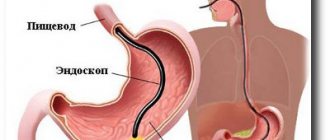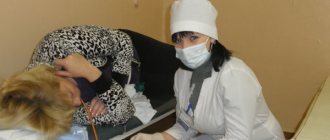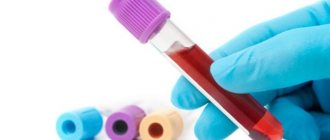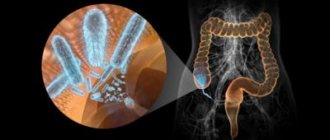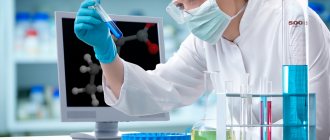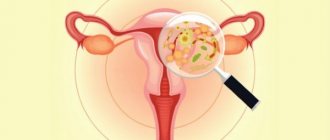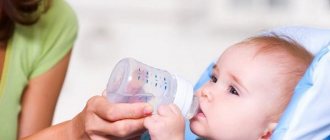What microorganisms inhabit the intestines
Of the intestinal microorganisms, the majority are bacteria - there are more than 500 species.
Some of them are beneficial to the body, some are harmful, and some are neutral. Harmful bacteria are called pathogenic microflora, neutral ones are called opportunistic microflora. Opportunistic bacteria are natural “residents” of the intestine. They do not cause harm to humans if their quantity does not exceed the permissible limit.
Pathogenic microflora is unnatural for humans - it should not be in the intestines. These bacteria belong to the group of intestinal infections.
Bifidobacteria and lactobacilli are the most numerous and active group inhabiting the intestines. They have a pronounced impact on its work and on the state of human health in general. These microorganisms are involved in the synthesis of amino acids and some vitamins, help digest food, regulate peristalsis, stimulate local immunity, produce immunoglobulins and bactericidal substances.
Bifidogroup bacteria have the strongest enzyme system and suppress the growth and reproduction of harmful microflora.
Decoding the results
More than 400 species of bacteria live in the intestines. Approximately 20 of them are of clinical significance. The analysis result form indicates the main microorganisms and their quantity per 1 g of biomaterial. Unit of measurement – CFU/g.
Normal bacteria
Main article: Normal (useful) representatives of intestinal microflora
Microorganisms of this group make up up to 98% of all intestinal bacteria. They are involved in the digestion of food, the synthesis of vitamins, and inhibit the growth of pathogenic microflora. Normal bacteria are included in probiotic preparations, which are prescribed to correct dysbiosis.
- bifidobacteria – 108 – 1010;
- lactobacilli – 106 – 108;
- typical E. coli – 106 – 108.
Be sure to read:
Klebsiella in the stool of a baby: symptoms, treatment and prognosis for the child
Opportunistic bacteria
Main article: Representatives of opportunistic intestinal microflora
Conditionally pathogenic flora are present in feces in small quantities. Bacteria break down food components and stimulate the immune system. Exceeding permissible limits disrupts the functioning of the digestive tract and provokes allergic reactions.
- lactose-negative E. coli – no more than 105;
- bacteria of the genus Proteus – no more than 102;
- enterococci – 106 – 107;
- yeast-like fungi – no more than 104.
Pathogenic bacteria
Main article: Representatives of pathogenic intestinal microflora
These microorganisms cause infectious diseases. In healthy people, there are no pathogenic bacteria in the stool.
- salmonella;
- shigella;
- Staphylococcus aureus;
- Pseudomonas aeruginosa;
- hemolytic Escherichia coli.
When a pathogenic microorganism is identified, its type and sensitivity to bacteriophages and antibiotics are indicated.
To distinguish true dysbiosis from short-term dysbiotic reactions, stool cultures are prescribed twice with an interval of 1 week. With persistent changes in the intestinal microbiocenosis, the results of both analyzes will be the same. The doctor will compare the data obtained with clinical manifestations and determine further tactics for managing the patient.
In continuation of the topic, be sure to read:
- Representatives of normal (useful) intestinal microflora: maintenance standards
- Stool analysis for UPF: preparation, delivery and interpretation
- How to take a stool test for the intestinal group?
- Representatives of pathogenic intestinal microflora
- Bacteriological culture (tank culture) of feces: essence, preparation and analysis
- Taking a stool test for dysbacteriosis + interpretation
- Preparing and submitting a stool test for dysbacteriosis in infants
- Intestinal dysbiosis in children: symptoms and treatment (diet, medications)
- Details about intestinal colonoscopy: preparation and procedure
- Details about the coprogram: preparation, conduct and interpretation of the analysis
When is it necessary to take tests for dysbacteriosis?
It is recommended to test for intestinal dysbiosis if the following symptoms are present:
- loose stools or constipation;
- foamy consistency of stool;
- changes in the composition of feces;
- sour or putrid smell of stool;
- bloating and abdominal pain, colic;
- increased gas production (flatulence);
- nausea, vomiting, belching, loss of appetite;
- intestinal failure;
- allergic reactions;
- sudden and causeless weight loss.
For preventive purposes, this study is recommended if you have been taking antibiotics for a long time.
Indications for analysis
The study should be carried out in cases where the symptoms of the pathology do not go away on their own within 4 days or are accompanied by dehydration, fever, intestinal bleeding and other signs of a dangerous course.
Dysbacteriosis - what is it?
As a rule, a test for dysbiosis is prescribed if the following symptoms are present:
- attacks of nausea;
- the appearance of bad breath;
- skin rash caused by disruption of the gastrointestinal tract (GIT);
- the formation of a white or grayish coating on the tongue;
- frequent urge to defecate (usually false);
- stomach upset;
- pain in the abdominal area;
- change in stool color, appearance of blood or mucus;
- feeling of discomfort in the intestines.
Stomach upset
When all of the above symptoms appear, the main analysis that needs to be carried out should be a stool test for dysbacteriosis. Only after this will the doctor be able to determine whether there is a need for additional tests, for example, a hemotest or analysis for the presence of different types of infections (staphylococcus, Escherichia, etc.).
On a note! You cannot self-medicate and prescribe certain tests for yourself by signing up for them at a private clinic without a special referral from a doctor. Only a qualified doctor can determine which diagnostic methods will be effective in this case.
Degrees of dysbacteriosis
Preparation for stool analysis for dysbacteriosis
To achieve maximum diagnostic accuracy, you should prepare as follows:
- 3-4 days before the test, stop taking strong medications, except those necessary for health reasons (hormone replacement therapy, heart medications).
- You should stop taking eubiotics and probiotics 2-4 weeks in advance, so as not to distort the picture with bacteria from the drugs.
- Do not eat food that affects the composition of the microflora (spicy, fatty, with excess protein) 2-3 days before the test.
- Avoid alcohol 2 days before the test.
- Do not abuse meat foods (manifests as putrefactive dyspepsia) or sweets (manifests as fermentative dyspepsia).
- Avoid laxatives or strengthening products;
- 2 days before the test, do not use rectal suppositories or do enemas.
Following these simple rules will allow you to obtain the most accurate result of a stool test for dysbacteriosis.
Rules for collecting analysis from children and infants
In young children, such examination follows the same scheme as in adults. They also need to remove all antibiotics, laxatives, rectal suppositories and wash the baby well. In addition, four days before stool collection, no new complementary foods should be introduced to the child. If it is possible and such an action will not seriously affect the baby’s condition, it is necessary to remove all medications, especially those taken for work or restoration of the gastrointestinal tract, including vitamins.
Attention! After collecting stool from a child, biological material must be taken to the laboratory within three hours. If the container is delivered late, the biomaterial will be dominated by a large number of exogenous bacteria.
Causes of intestinal microflora disorders
How to get tested for intestinal dysbiosis
Simple recommendations that need to be followed for the study to be as effective as possible:
- Before collecting feces, you should prepare a pot or duck - they must be clean and dry.
- The stool collection container should be treated with a disinfectant, such as ethyl alcohol, but do not use powders or detergents, as they can affect the test result by inhibiting bacteria in the sample.
- Using a wooden stick, a disposable spoon, or a special spatula from a kit purchased at a pharmacy, place a piece of feces in a special container (also from the kit).
- The stool sample should be delivered to the laboratory within 2 hours of defecation.
- Avoid long-term (more than 3 hours) storage, even in the refrigerator.
- Do not expose the sample to extreme temperatures (freezing, overheating), otherwise the analysis will be unreliable.
- Before taking biomaterial, hygiene procedures should be carried out without using soap or shower gel.
- It is necessary to exclude urine from getting into the stool sample, as this can greatly distort the test result.
You should pay due attention to the recommendations on how to properly test for dysbacteriosis, since the accuracy of diagnosis, and therefore the effectiveness of treatment, depends on this.
Fecal analysis in infants: what you need to know
The baby’s intestines begin to be populated by microflora already during childbirth. Then the natural process continues, and how painless and beneficial it will be for the baby’s health depends on many factors.
Ideally, a child up to six months is exclusively breastfed, then his microflora consists of so-called probiotics: symbiont bacteria of bifidogroups.
If the conditions for feeding the baby are far from ideal: artificial feeding, or the mother took antibiotics during breastfeeding or was ill herself, dysbiosis may occur in infants.
Dysbacteriosis in infants can occur in the following cases:
- the mother had health problems during pregnancy;
- pathological childbirth and long stay in the hospital;
- prematurity of the baby;
- late breastfeeding;
- the use of antibiotics or hormonal drugs to treat an infant or nursing mother;
- artificial feeding;
- the child’s stay in unfavorable physical or psycho-emotional conditions.
There are many indications for stool examination in infants.
An analysis for dysbacteriosis in infants is prescribed in cases where the following symptoms are present:
- frequent bloating, flatulence;
- colic;
- stool that is abnormal in color or odor;
- the baby has an unpleasant odor from the mouth;
- the baby's salivation is significantly increased;
- the appearance of allergic reactions on the skin (dryness, rash, irritation);
- vomit;
- diarrhea for more than 2-3 days;
- loss of appetite, the child is not gaining weight well;
- problems when introducing new recommended products into the diet (complementary foods);
- the appearance of foam or inclusions of an unusual color in the baby’s stool.
5-7 days before testing feces for dysbiosis in an infant, it is not recommended to introduce new foods into his diet. Do not give your baby meat or meat broths.
2 days before the study, exclude laxative foods and medications, do not do an enema, do not use suppositories;
How to properly test for dysbacteriosis in a baby? The sample collection procedure itself differs little from the “adult” version:
- defecation should occur naturally; laxative suppositories should not be used;
- In the morning, perform hygienic procedures for the anus without using soap;
- Place a special oilcloth or plastic film under the baby;
- After defecation, take a sample (15-20 grams) into a pre-prepared container purchased at a pharmacy using a special spatula, which is included with the container.
The sample must be delivered to the laboratory no later than 2 hours after it is submitted.
Deciphering the analysis for dysbacteriosis in infants is performed according to the standard procedure. The number of bacteria of beneficial microflora in infants will normally be higher, and the number of opportunistic microflora - lower than in older children and adults.
How to donate stool correctly
The accuracy of the result of any laboratory test depends not only on the competence of medical workers, the quality of equipment and reagents, but also on how correctly the patient collected the material for research.
Before taking a stool test for dysbacteriosis, you must read the instructions for preliminary preparation.
Preparing for analysis
The main task of the preparatory stage before submitting the material for research to the laboratory is to minimize the factors influencing the error of the results. These factors include medications, food and personal hygiene.
Therefore, preparation for analysis should include:
- complete exclusion 3 days before the day of collection of material for analysis of laxatives and antibiotics;
- 3 days before the study you should not use rectal suppositories;
- immediately before collecting material for analysis, you need to empty your bladder and wash thoroughly with soap.
It is necessary to prepare in advance a sterile container in which the material and the stick will be placed - with its help the required amount will be separated from the total mass. Sterile containers for analysis can be purchased at a pharmacy.
How to collect stool
Proper collection of stool for dysbacteriosis implies maximum sterility of the procedure.
- To do this, you can use cling film, which is placed in the toilet bowl before bowel movement.
- It is important that the stool is spontaneous, that is, it is impossible to stimulate emptying with any drugs, this will certainly affect the results of the study and make the data unreliable.
- After defecation, you need to use a special stick to separate about 10 grams of feces (a tablespoon), place it in a container and close it tightly.
How to collect stool for analysis
Before collecting feces, they urinate into the toilet, then, through natural bowel movements, the material is collected from the vessel. The vessel can be a sterile jar or a special container. They can be bought at any pharmacies. Before use, the vessel is treated with a disinfectant, washed with water and finally rinsed with boiling water. The analysis is carried out there. In this case, you need to make sure that no urine gets into the vessel. The jar lid must be tightly closed.
When collecting material, 10 ml of feces is sufficient. Special containers, as a rule, are equipped with a measuring scale, which helps to avoid mistakes with the amount of material collected. Feces should be taken from 3-4 different places. For this purpose, a spoon is provided in the containers. If mucus or blood is found in the stool, they must be donated.
To take a stool test for dysbacteriosis, you cannot store the container with the material in the refrigerator for several days, as with traditional analysis. It is better to collect it in the morning and quickly deliver it to the laboratory.
Preparation
The reliability of the data obtained during the study of stool for dysbacteriosis depends on preliminary preparation. This is due to the fact that some products affect the analysis readings. You need to prepare for the procedure two weeks before the appointed day.
- First, stop taking probiotics 14 days before your due date.
- After the last dose of antibiotics, at least a day should pass.
- Rectal suppositories are discontinued three days in advance.
- The next condition is to introduce dietary restrictions; 4 days before examining intestinal microflora for dysbacteriosis, it is prohibited to consume:
- meat, since it contains hemoglobin;
- foods containing iron;
- fresh vegetables and fruits;
- hot and sour dishes;
- alcoholic drinks.
- It is prohibited to use laxatives and enemas before collecting stool.
Alcohol
It is very important to prepare for microbiological examination of stool for dysbacteriosis. If it is necessary to donate stool for a child’s intestinal examination, parents need to monitor the implementation of the listed recommendations.


